Main menu
Common skin conditions

NEWS
Join DermNet PRO
Read more
Quick links
Author: Stavonnie Patterson MD, Assistant Professor in Dermatology, Northwestern University, Chicago IL USA; DermNet Chief Editor: Dr Amanda Oakley, Dermatologist, Hamilton, New Zealand, December 2013.
Introduction Hair in women of African descent Shampooing and conditioning Moisturising Natural versus chemically treated hair Hairstyles
Hair care practices refer to popular hairstyles and routine hair care, such as shampooing, conditioning, moisturising, and chemical treatment.
Though there are many variations in hair type, persons of African descent generally have wavy or curly hair. The amount of curl is different for each person and can range from wavy to tightly coiled.
The hair tends to be dry, and the curls may intertwine to form knots. Thus, styling practices in women of African descent are designed to make the hair more manageable and to add moisture.
Many women of African descent do not shampoo their hair daily because their hair is innately dry. The normal range is from several times a week to once monthly.
Hair styling products designed for persons of African descent include hair oils, sheens, and greases. They add moisture and help to attain and maintain the desired hairstyle. Different products work best for different hair types.
Moisturising products are applied after shampooing and conditioning. Some are used daily and others intermittently.
Natural hair refers to hair that has not been chemically treated to alter the natural curl pattern. Hairstyles in women of African descent include thermally straightened hair, afros, locks, braids, weaves, and twists.
Thermally straightened hair is hair straightened with the use of heat, such as blow drying, flat ironing and pressing the hair with a pressing comb (hot comb). The hair reverts to its natural curl pattern when wet. If heat is used too frequently or at very high temperature, the hair will break.
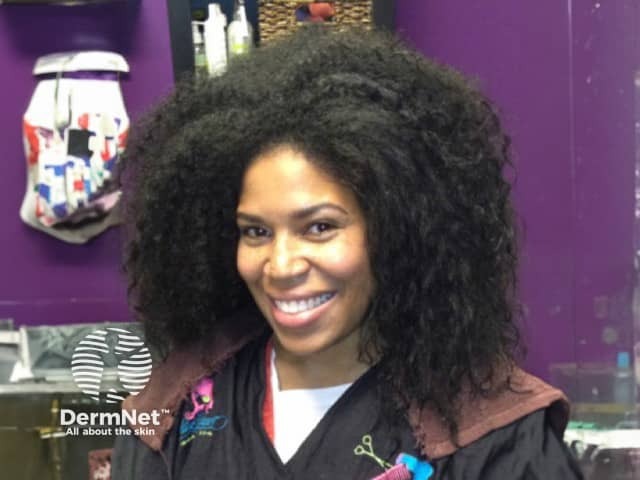
Natural hair in woman of African descent
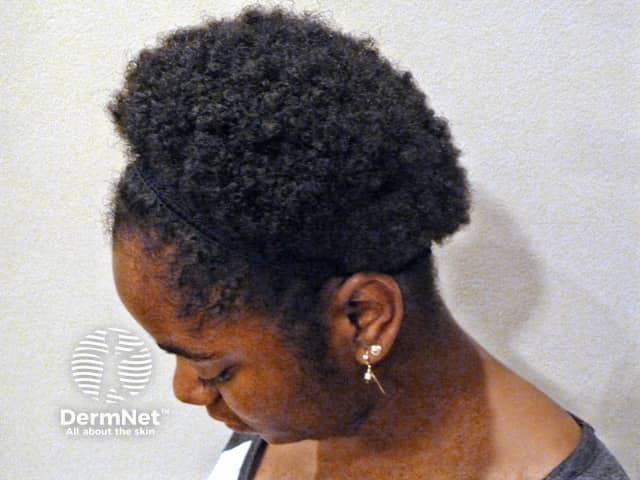
Natural hair in woman of African descent
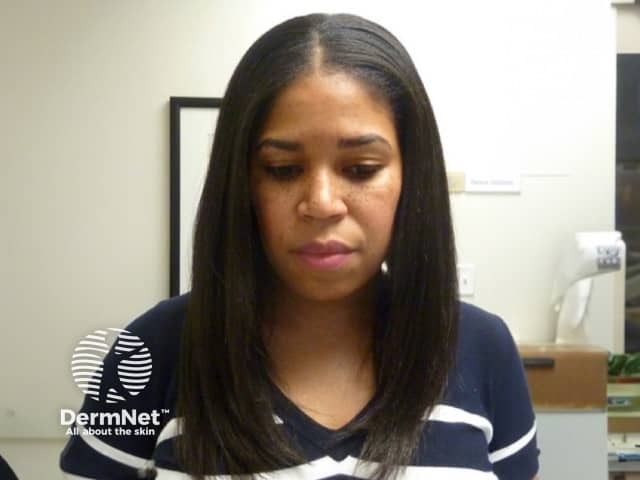
Thermally straightened
Recommendations for thermal heat:
Chemically treated hair refers to hair that has been treated to alter the natural curl pattern permanently. Chemical treatments include relaxers, Jeri curls, S-curls and texturisers.
The most common chemical treatment for African American women is the relaxer. Relaxers are made of sodium, potassium or guanidine hydroxide. They break the cystine disulfide bonds in the hair, resulting in permanently straight hair. As the hair grows out, the new curly hair must also be chemically treated so that it is straight.
Relaxers are typically applied every 6-12 weeks. Relaxers make the hair more fragile and more susceptible to breakage, so they should not be applied more frequently than every six weeks. Damage is increased when relaxers are applied in combination with hair colour or with styles that create increased tension on the hair, such as tight braids.
Relaxers may also cause chemical burns, irritant contact dermatitis and partial fractures of the hair shaft (trichorrhexis nodosa).
Recommendations for relaxer application:
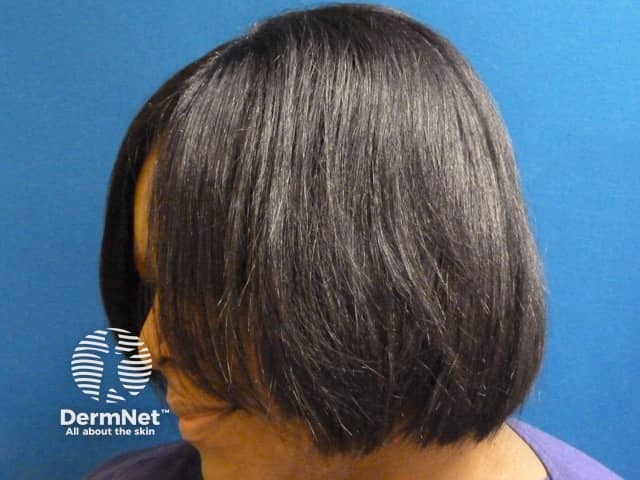
Relaxer used to straighten hair in woman of African descent

Relaxer used to straighten hair in woman of African descent
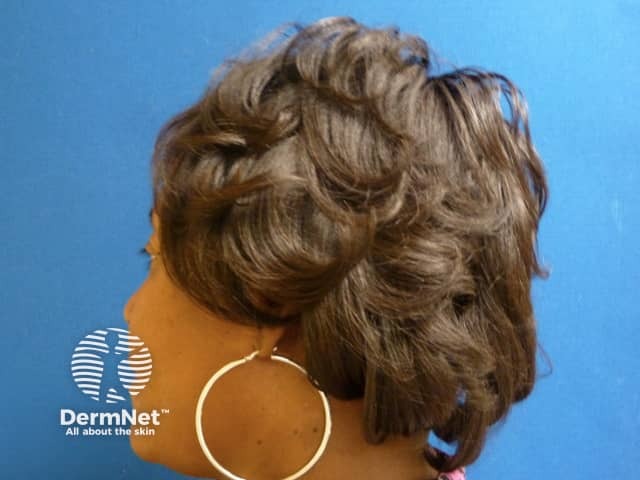
Relaxer used to straighten hair in woman of African descent
S-curls, Jeri Curls and texturisers reset the natural curl pattern in a looser curl. These products are made of thioglycolate, which may cause irritant or rarely allergic contact dermatitis.
Hairstyling is a significant part of the lives of Black women. Hair is an outward expression of the person and a great deal of time and money are spent on maintaining hairstyles. Many women visit the hair salon weekly to biweekly to keep their hairstyle. Some standard styling practices are described below.
Three strands of hair are intertwined in a regular pattern to make braids. Extensions may be added. Braids can be worn with natural and chemically treated hair.
If the hair is braided too tight, hair loss may result. Typically this results in traction alopecia, i.e. permanent loss of hair around the hairline.
Usually, braids are worn for several weeks. Then the hair should be unbraided and rebraided if so desired. The hair may be shampooed while braids are in place. Regular shampooing is encouraged.
Two strands of hair are intertwined in a regular pattern to make twists. Extensions may be added. Twists can be worn with both natural and chemically treated hair.
As with braids, traction alopecia may result if twists are too tight. The twists must be maintained regularly to maintain a fresh, well-groomed appearance.
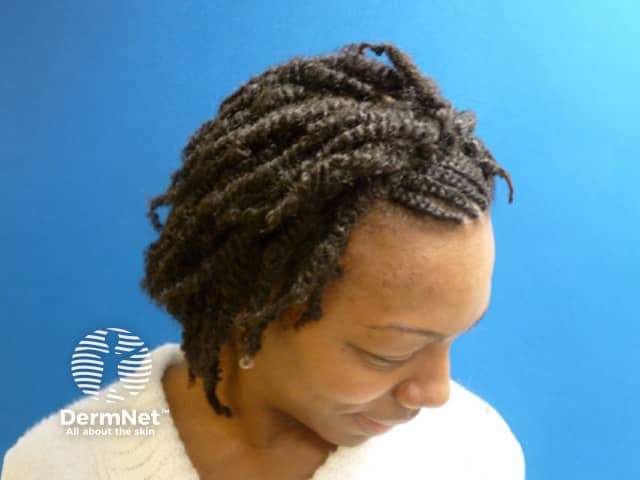
Natural hair twisted in woman of African descent
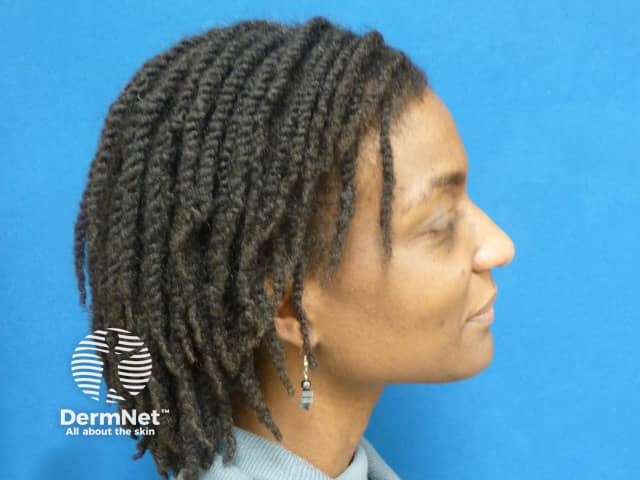
Natural hair twisted in woman of African descent
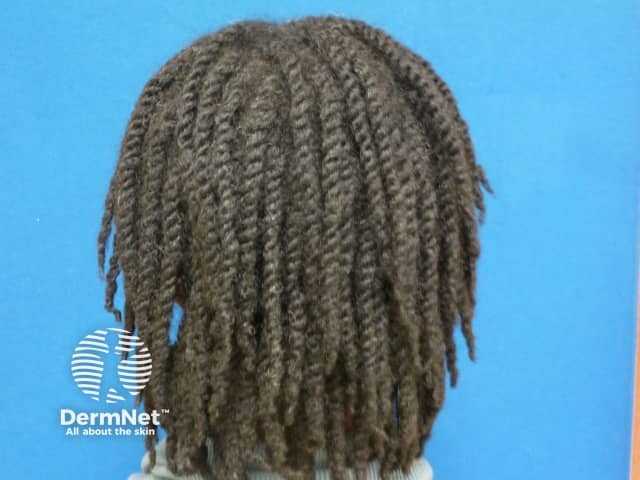
Natural hair twisted in woman of African descent
The Afro is the natural tight-curl pattern.

Natural hair in woman of African descent
Weaves are wefts of artificial or natural hair that are either clipped, sewn, fused, glued or bonded into the hair. They are also called hair extensions or integrations. Weaves can be worn with both natural and chemically treated hair.
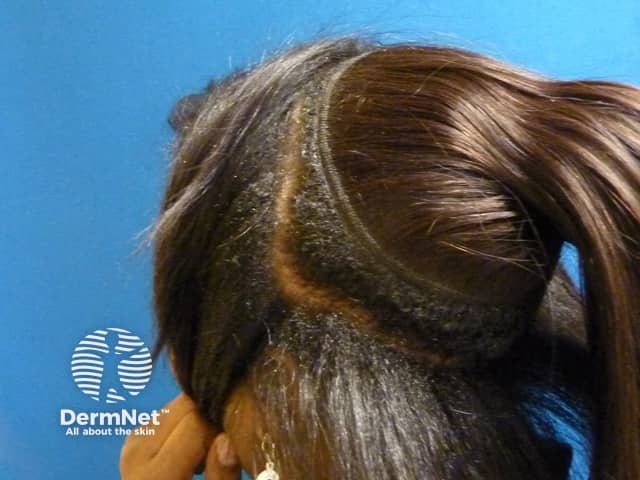
Natural hair with weaves in woman of African descent
Dreadlocks (also known as locks or locs) describe natural hair that is allowed to knot and intertwine.
Routine upkeep requires shampooing and manipulating the new growth, which is allowed to lock.
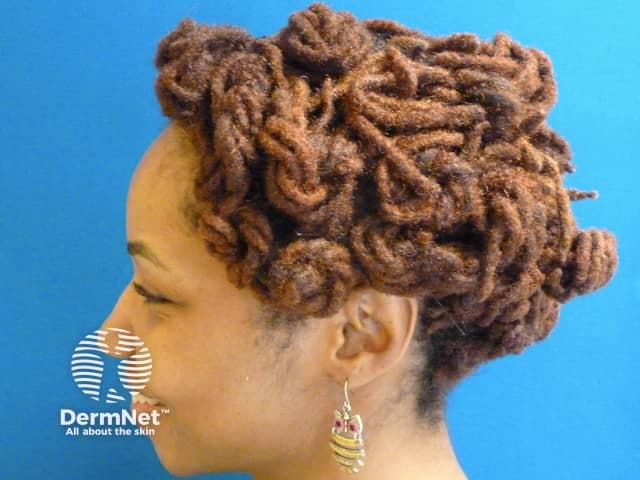
Locks in woman of African descent
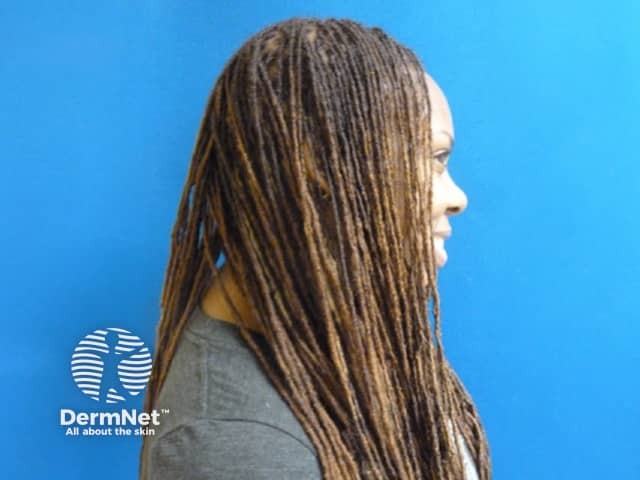
Locks in woman of African descent
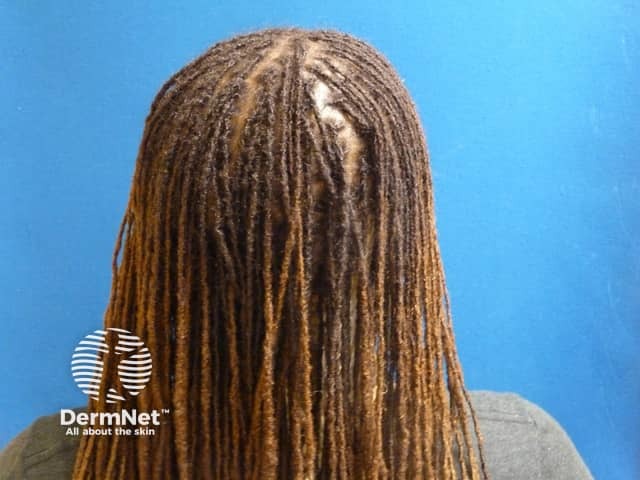
Locks in woman of African descent